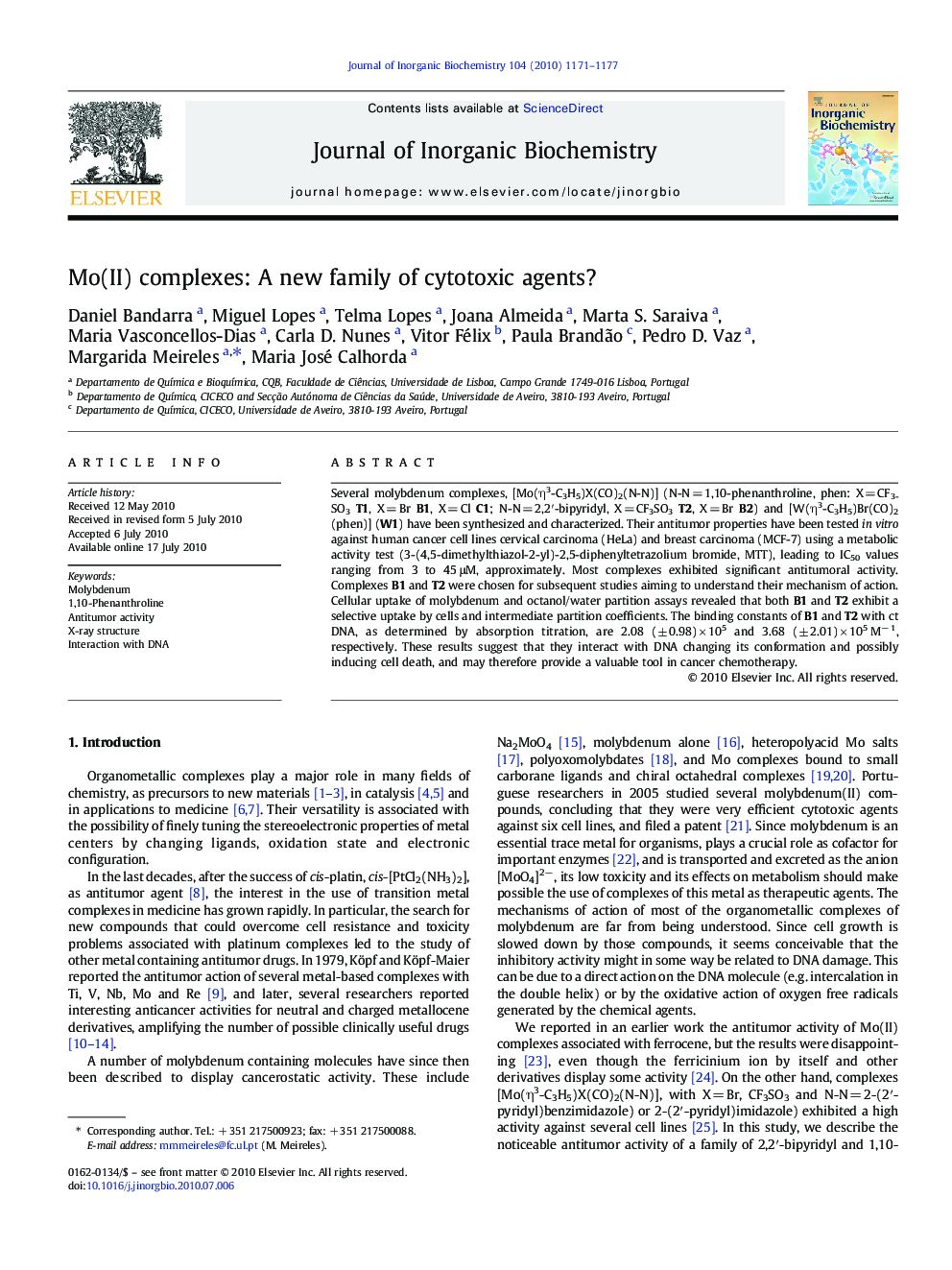| Article ID | Journal | Published Year | Pages | File Type |
|---|---|---|---|---|
| 1317932 | Journal of Inorganic Biochemistry | 2010 | 7 Pages |
Several molybdenum complexes, [Mo(η3-C3H5)X(CO)2(N-N)] (N-N = 1,10-phenanthroline, phen: X = CF3SO3T1, X = Br B1, X = Cl C1; N-N = 2,2′-bipyridyl, X = CF3SO3T2, X = Br B2) and [W(η3-C3H5)Br(CO)2(phen)] (W1) have been synthesized and characterized. Their antitumor properties have been tested in vitro against human cancer cell lines cervical carcinoma (HeLa) and breast carcinoma (MCF-7) using a metabolic activity test (3-(4,5-dimethylthiazol-2-yl)-2,5-diphenyltetrazolium bromide, MTT), leading to IC50 values ranging from 3 to 45 μM, approximately. Most complexes exhibited significant antitumoral activity. Complexes B1 and T2 were chosen for subsequent studies aiming to understand their mechanism of action. Cellular uptake of molybdenum and octanol/water partition assays revealed that both B1 and T2 exhibit a selective uptake by cells and intermediate partition coefficients. The binding constants of B1 and T2 with ct DNA, as determined by absorption titration, are 2.08 (± 0.98) × 105 and 3.68 (± 2.01) × 105 M− 1, respectively. These results suggest that they interact with DNA changing its conformation and possibly inducing cell death, and may therefore provide a valuable tool in cancer chemotherapy.
Graphical abstractMo(II) complexes were tested and acted as potent cytotoxic drugs, interacting with DNA in vitro. Do they enter the cell and directly damage DNA to inhibit cell growth?Figure optionsDownload full-size imageDownload as PowerPoint slide
